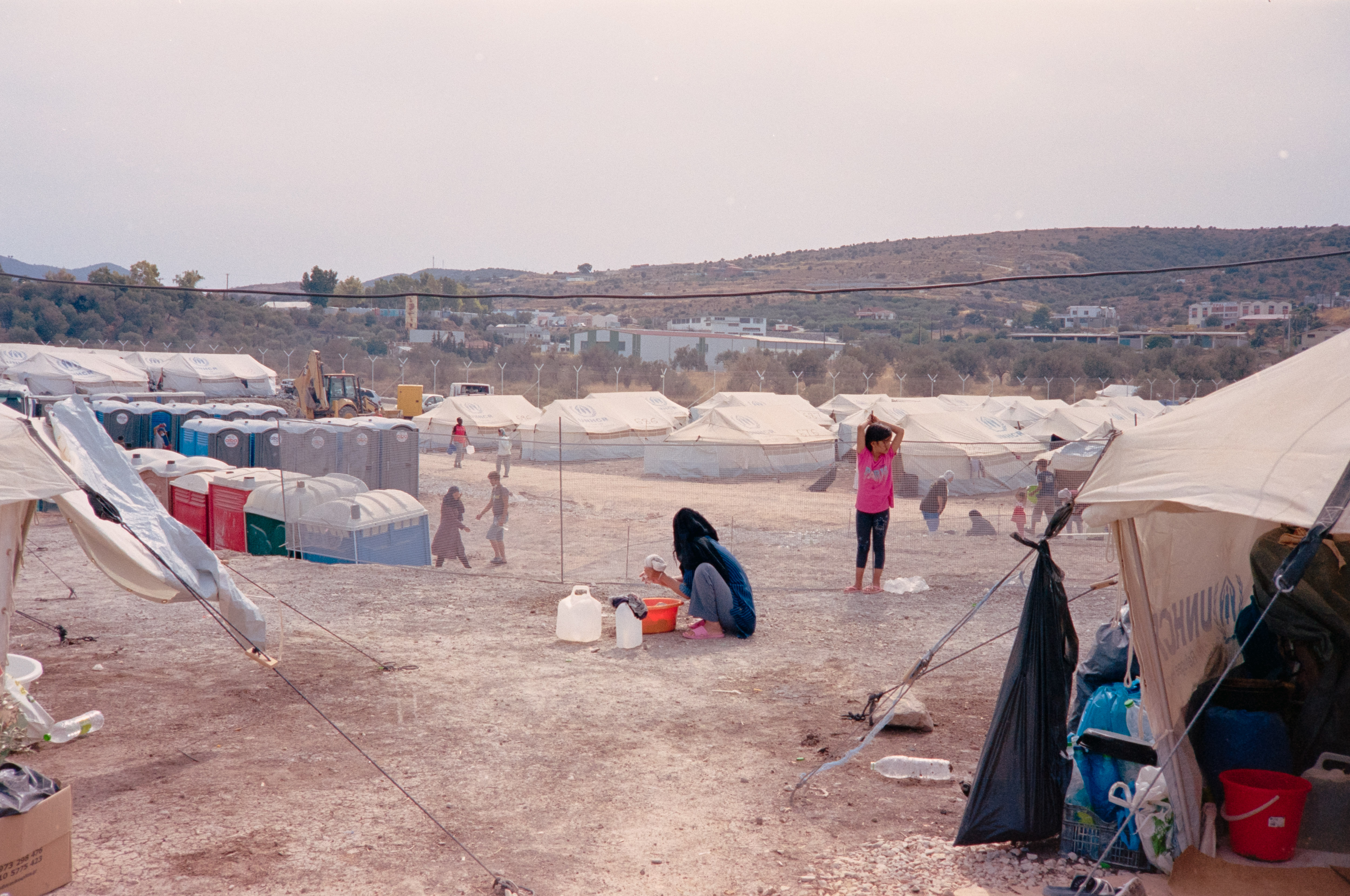"Sovereign is the one to whom all people are homines sacri and homo sacer is the one to whom all people act as sovereigns."
Agamben - Homo sacer: Sovereign Power and Bare Life (1995)
Ancient Roman law refers to the homo sacer as one who may not be sacrificed, but may be killed. Based on this definition, the sacred man finds himself at the threshold where his death can neither be classified as a religious nor as a criminal act, creating a realm where the homo sacer and the sovereign meet both inside and outside the order.
The Italian philosopher Giorgio Agamben reawakens the figure of the homo sacer by applying its legal frame to the refugees at the European border: bare lives held in a permanent state of exception, living in camps excluded from justice and order. Soon enough, the whole scope of his analysis would become visible.
I (DESTRUCTION)
Moria - September 10, 2020
On the night of September 8 Moria refugee camp, Europe’s largest and also one of its most devastating camps located on the Greek Island of Lesbos, burned down, leaving 13.000 people stranded on the streets between Moria and Mytilene without shelter, food or water.
"According to one witness, "every side is burning, North, South, East, West." Fires consumed buildings representing the bureaucratic infrastructure managing and supporting the border system, including the UNHCR and European Asylum Support offices." (CPT)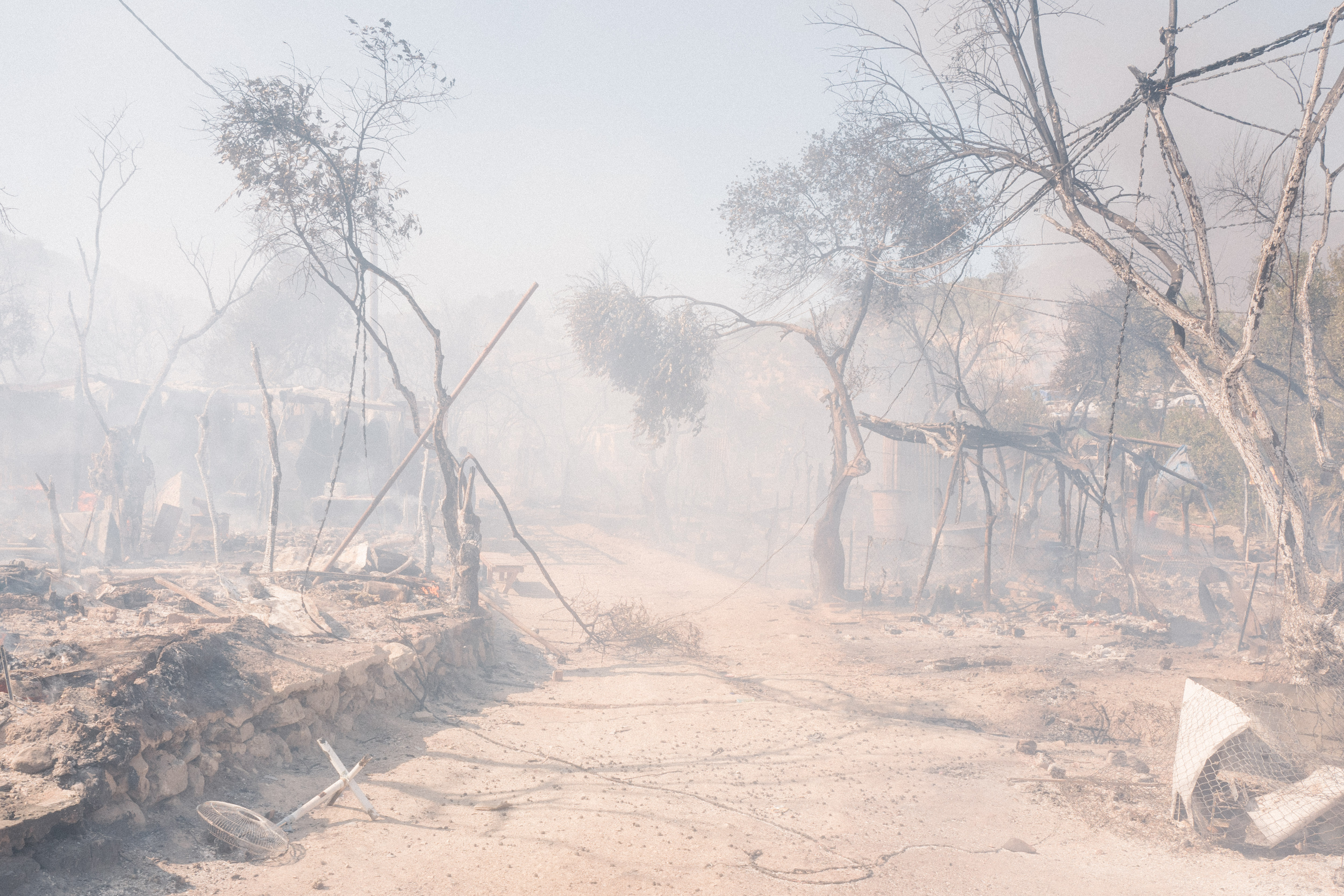

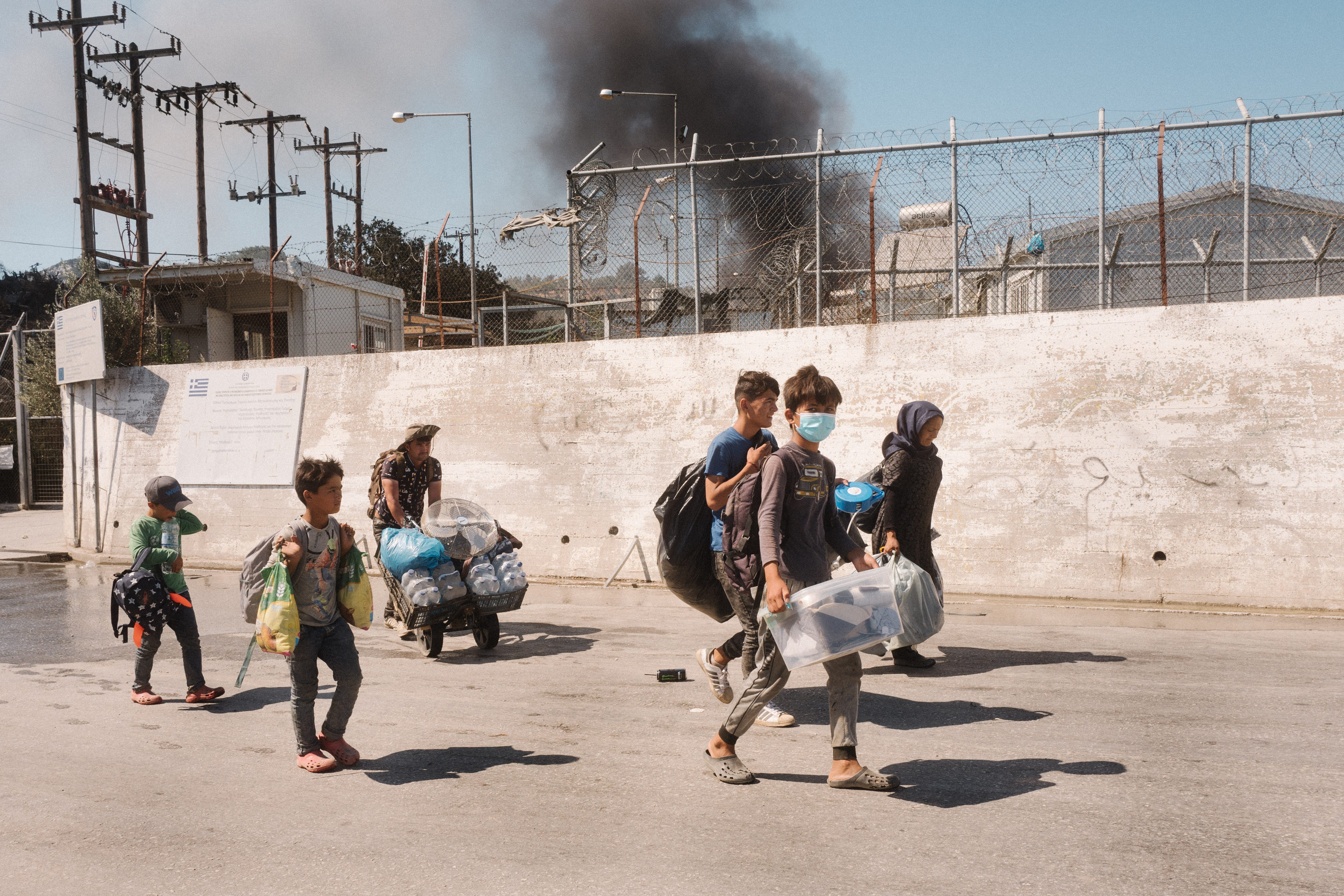

II (CRISIS)
Kara Tepe - September 11-17, 2020
Refugees were subsequently moved to Kara Tepe district but ultimately still remained unsheltered, unwanted and uncared for. As the situation worsens for another week, the public outcry towards a sustainable solution is rising. Meanwhile, the streets are monitored by riot police to prevent the refugees from spreading.
“People don’t want to go back to a hell like Moria or a closed camp” (The Guardian)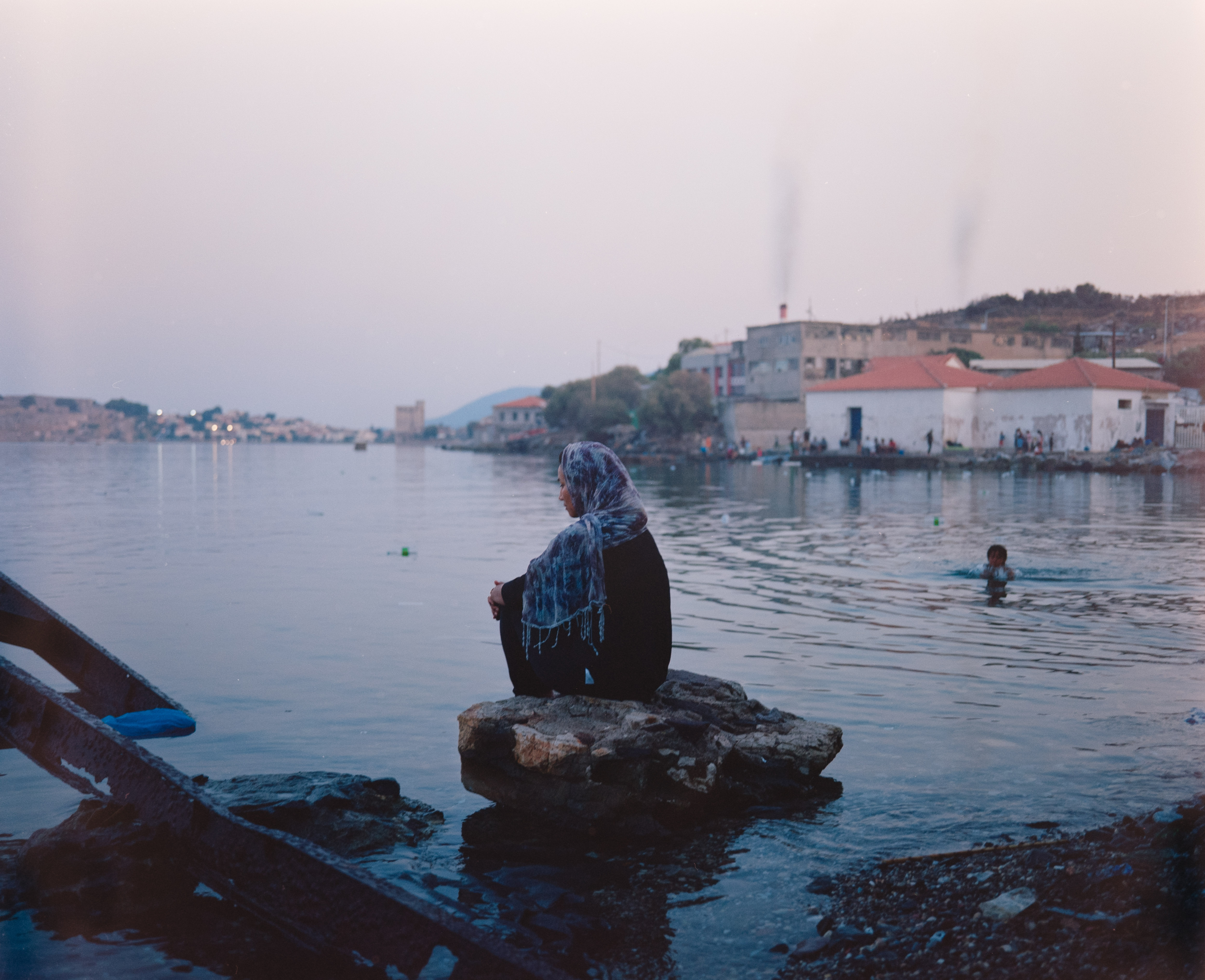

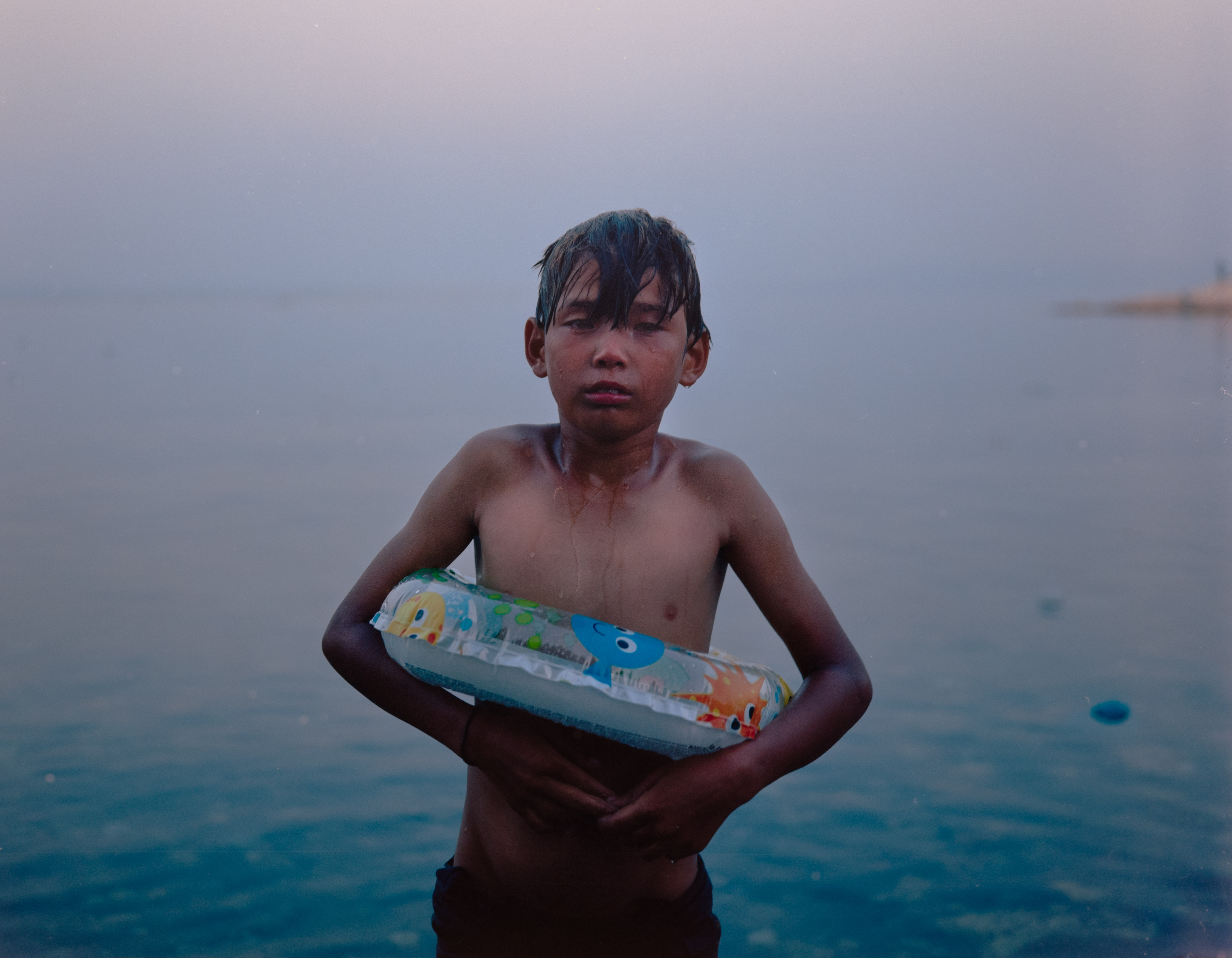
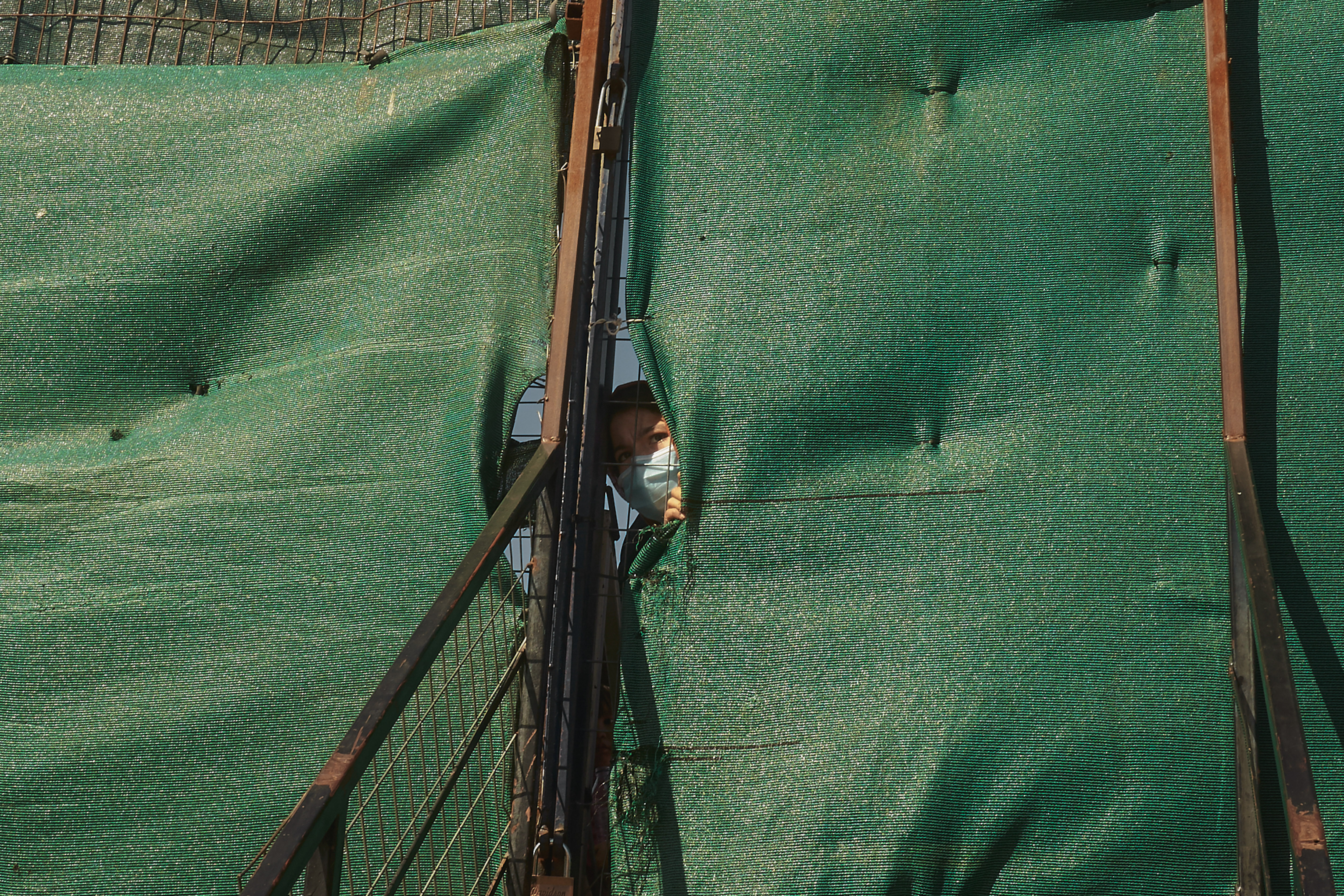

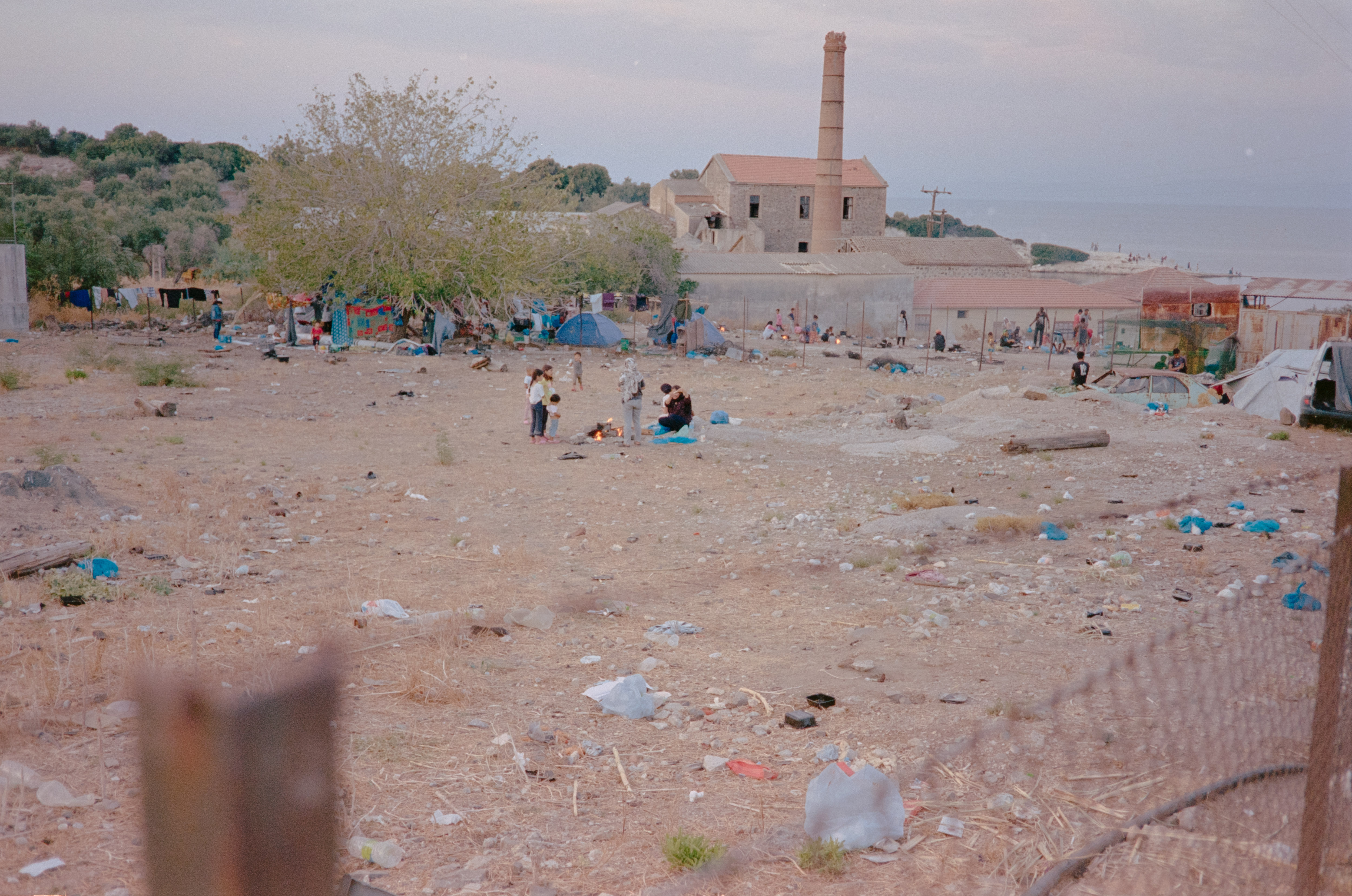
III (RETURN)
Kara Tepe, September 18, 2020
A new camp is built on a former shooting range near the burned down campsite. Some asylum seekers are permitted to enter the European mainland. The rest, however, have to stay. On September 18, 2020, 7000 refugees move into their new tents located between the Panagiouda and Kara Tepe district. Moria 2 is born.
“There is nothing here! Imagine you are in a prison. That you hardly have a toilet, 2 or 3 hours of electricity per day. It’s cold at night. The food that they give us is aweful, and you have to eat it, beacause of not dying. If you get sick, you have to be in line for more than 3 hours.” (Aziz, inhabitant of Moria 2)

